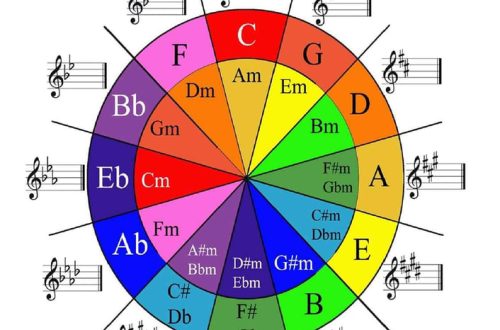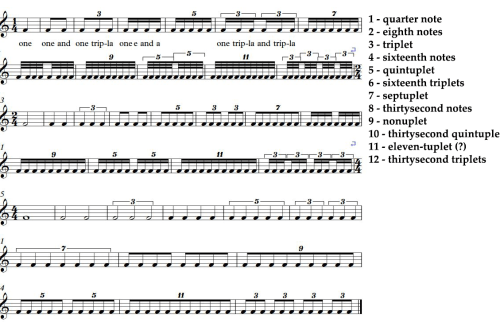
Strong beats
Contents
How can changing accents affect the sound of music?
This is an addition to the article ” Rhythm “. We want to show the importance of the value of the strong beat. Let’s say we have the following group of notes (each note, including the rest, is numbered):

Example 1
Let us have note number 1 on the strong beat. In this case, we get the following:

Figure 1. Downbeat on note #1
A drum part has been added to the sound example so that strong beats and the rhythmic pattern itself can be heard better. The measure shown in the figure is played twice in the example.
Our groups of notes in the picture are combined with red brackets. There are four groups in a measure. Be sure to listen to an example by clicking on the picture or the inscription below it. Remember the rhythm given by the example to compare it with the following examples.
Example 2
Now the downbeat will be note number 2. In this case, we get the following:

Figure 2. Downbeat on note #2
Also, as in example 1, there is a drum part in the sound file, and the bar indicated in the figure is played twice. Listen to an audio sample. Notice how much the rhythm pattern has changed.
Example 3
This example is interesting because the downbeat falls on a pause (note number 3). In this case, we get the following:

Figure 3. Downbeat on note #3 (this is a pause)
Listen to an audio sample. Pay attention to the rhythmic drawing – there is nothing in common with the previous two drawings, although all we have done is just accentuate another note.
Example 4
The last example, in which the downbeat is note number 4. In this case, we get the following:

Figure 4. Downbeat on note number 4
Listen to an audio sample. And again we got a new rhythmic pattern.
Results
You just saw (and hopefully heard) how the choice of accent affects the rhythmic pattern.





